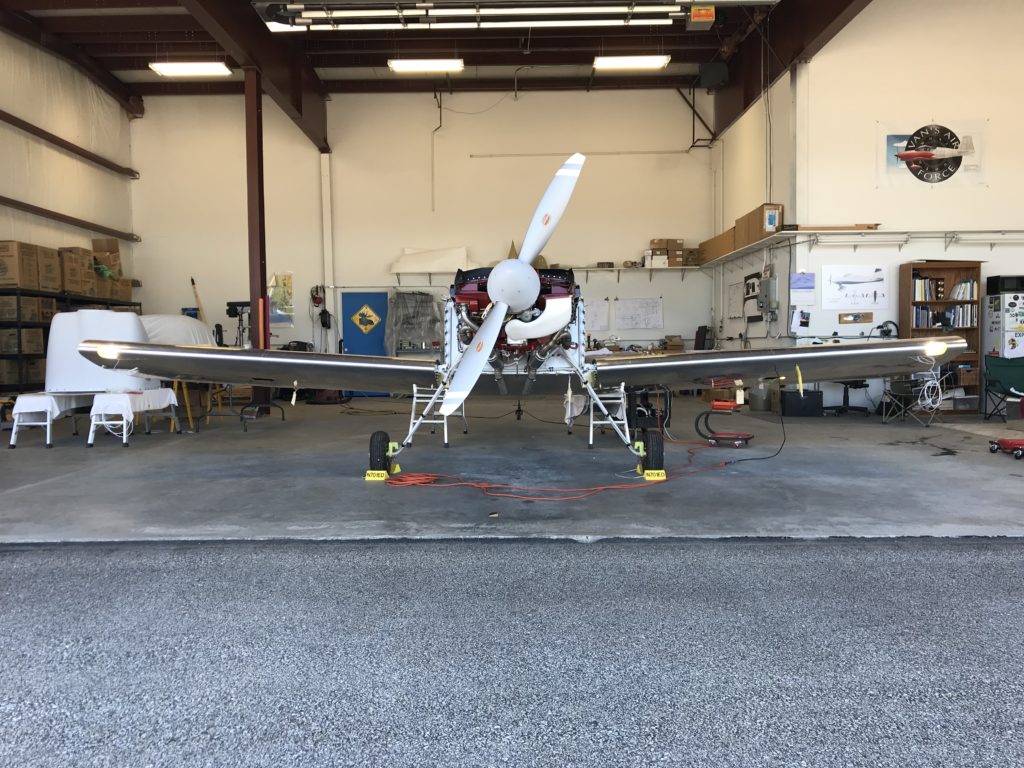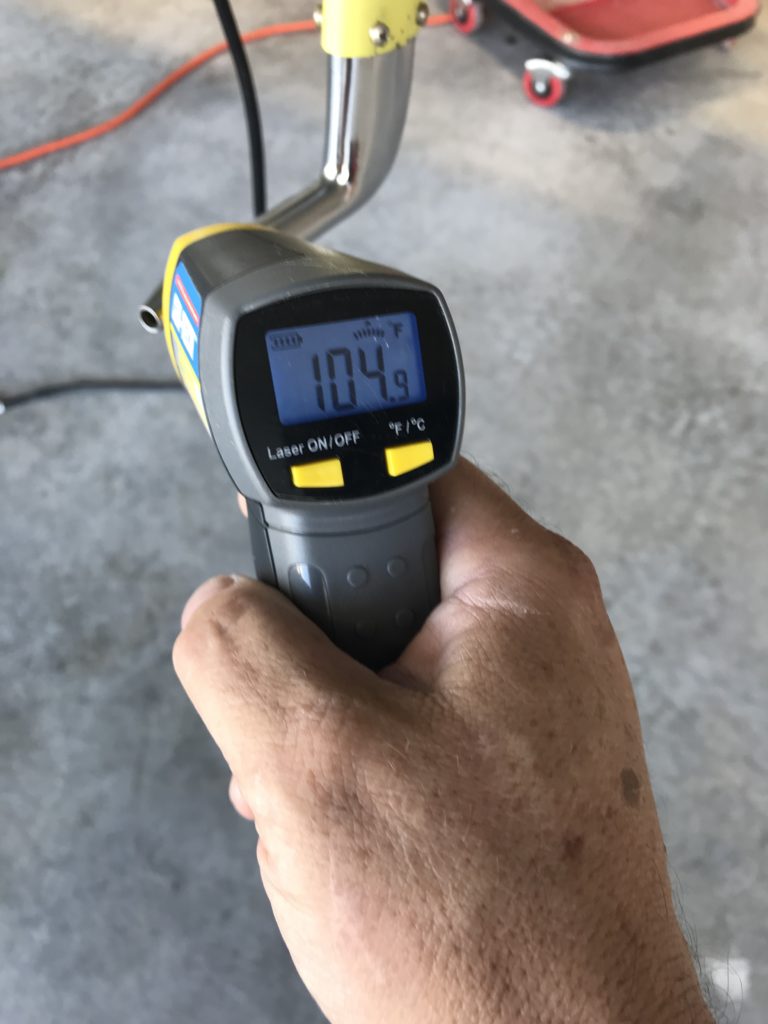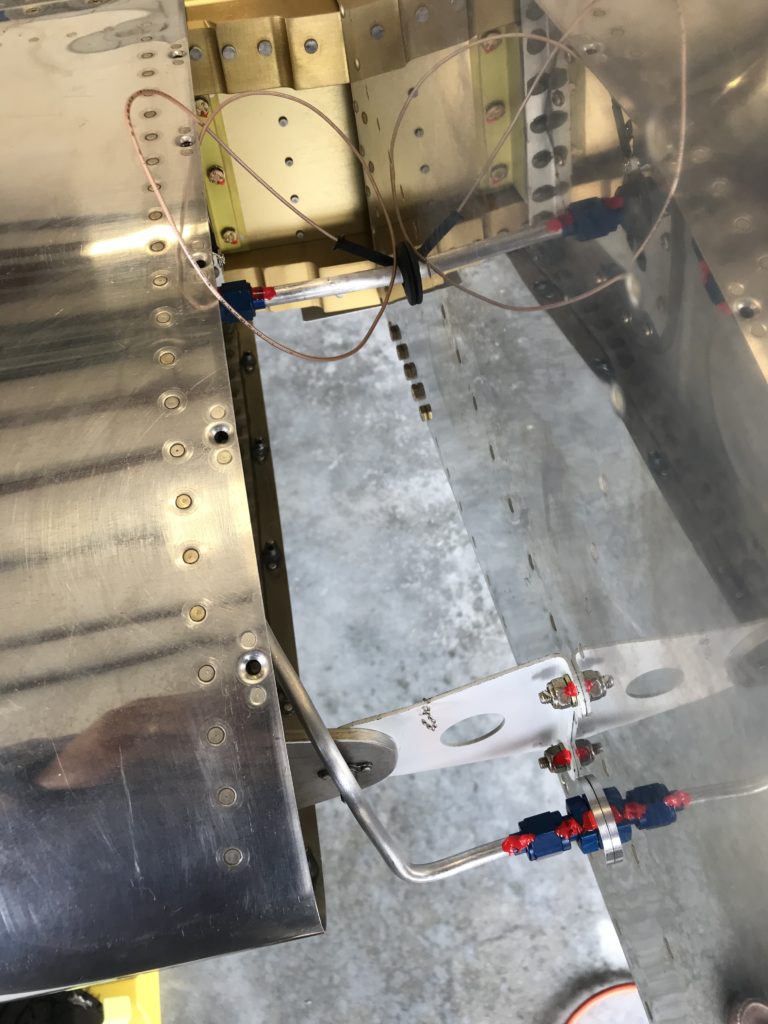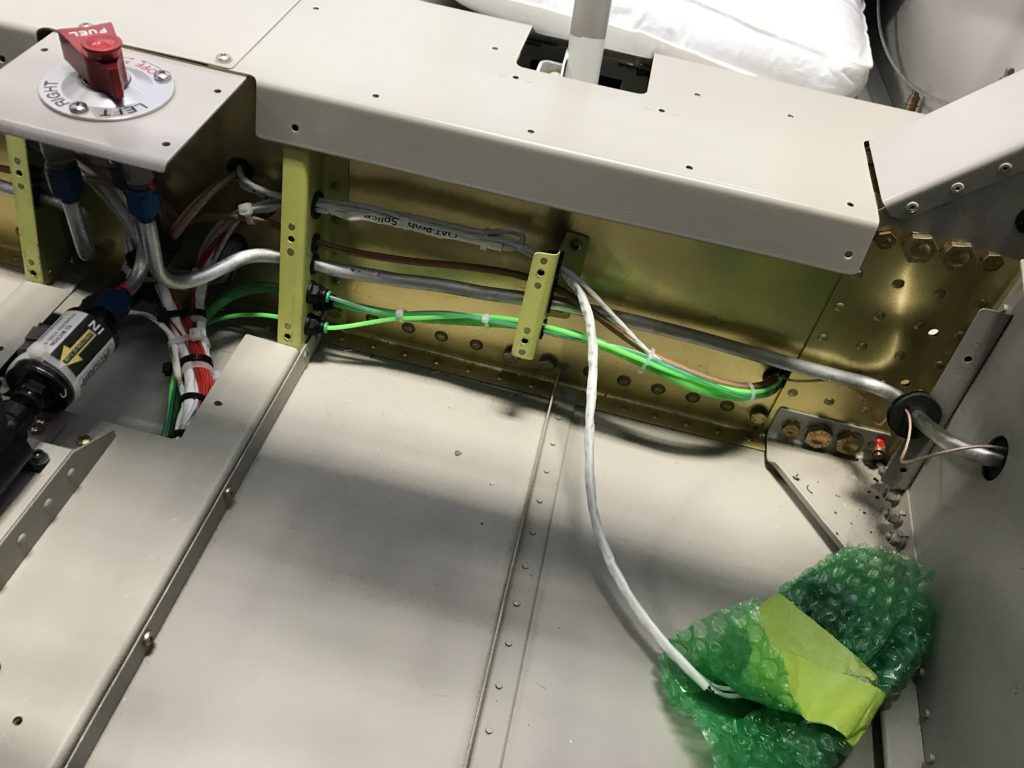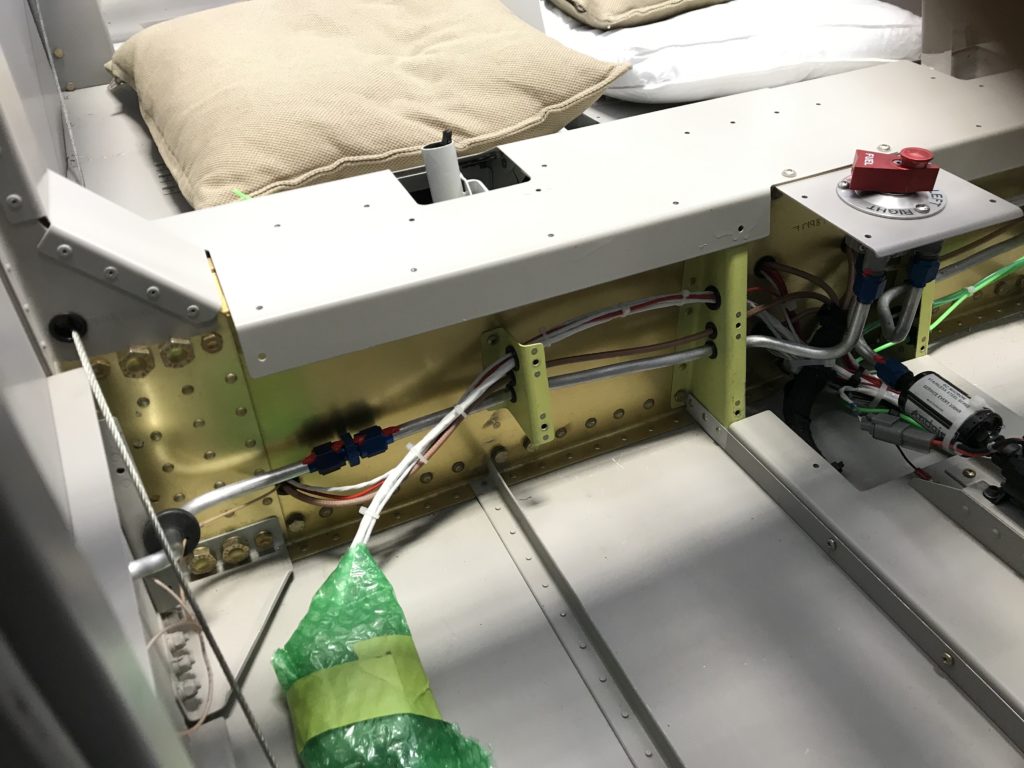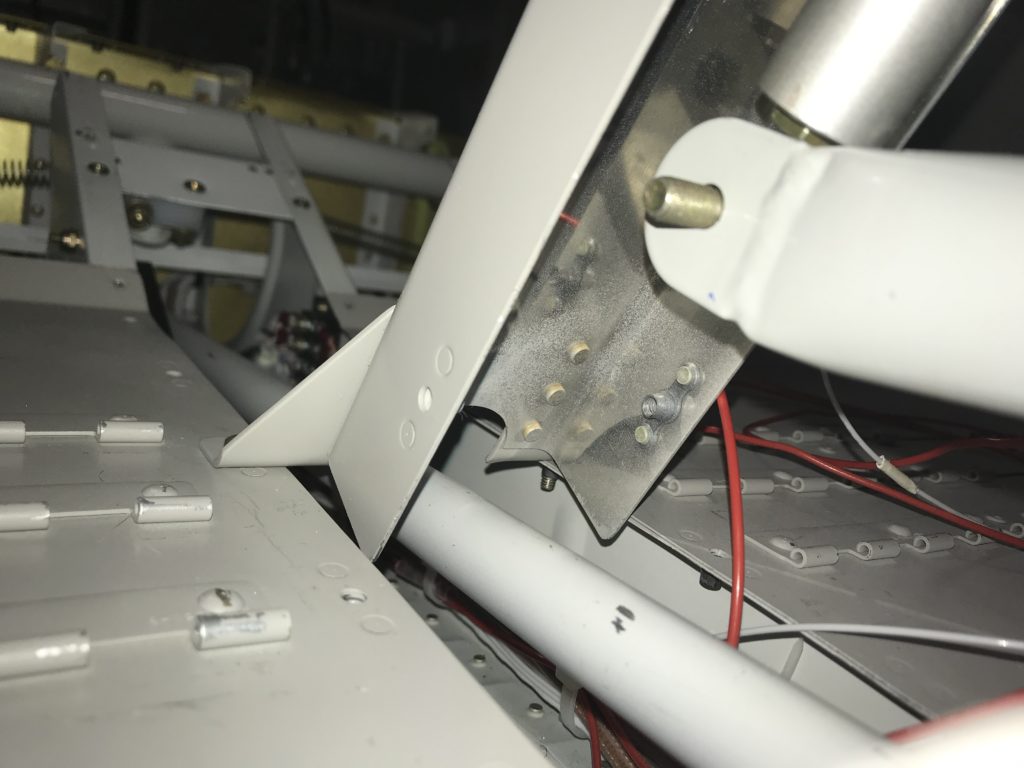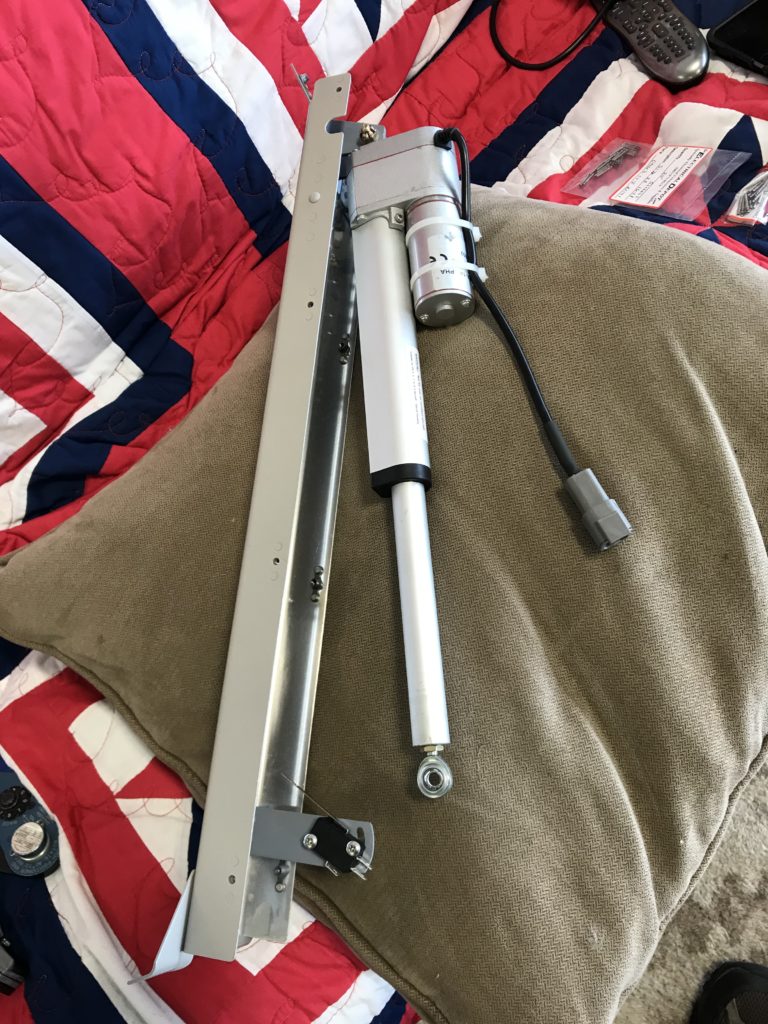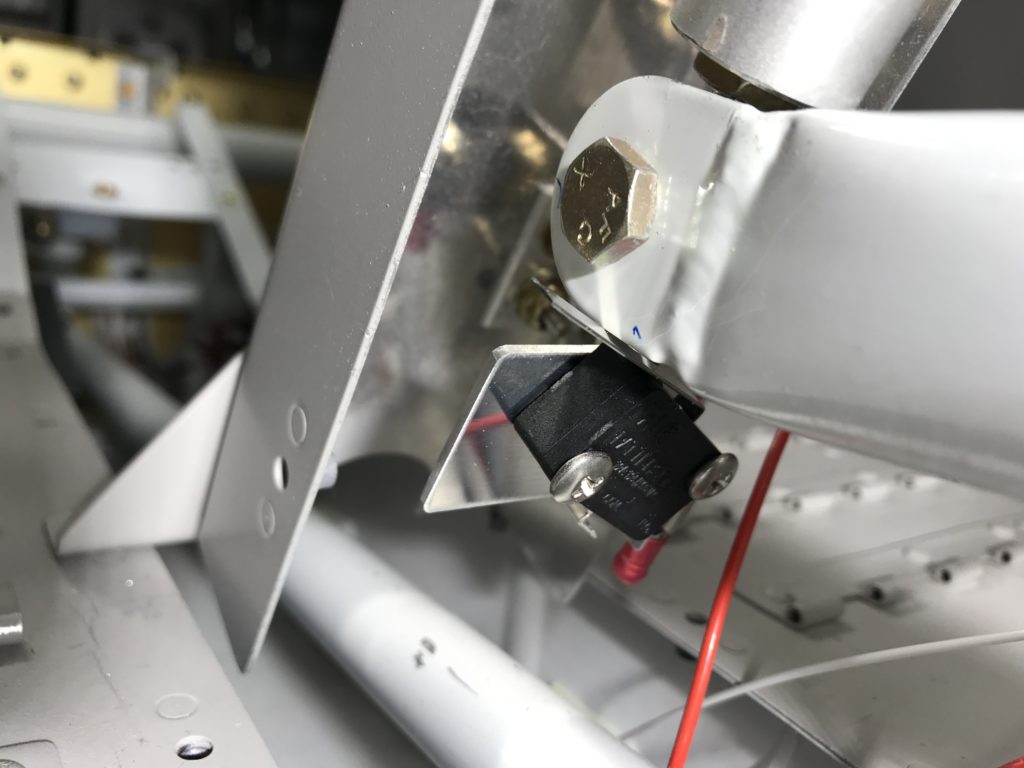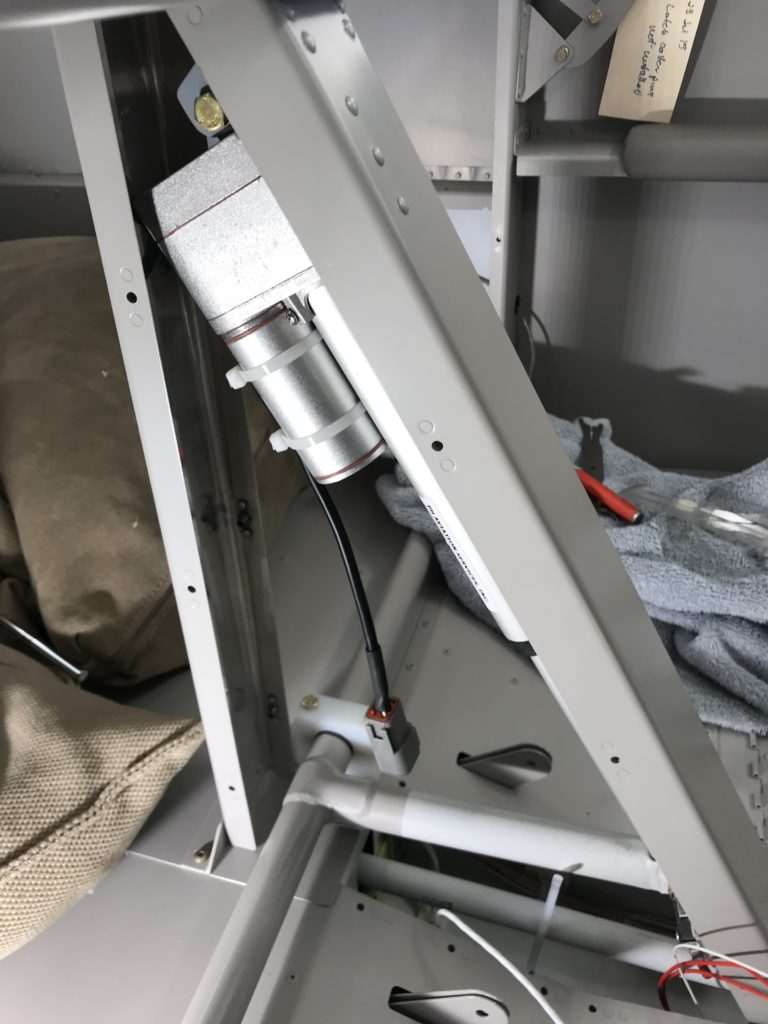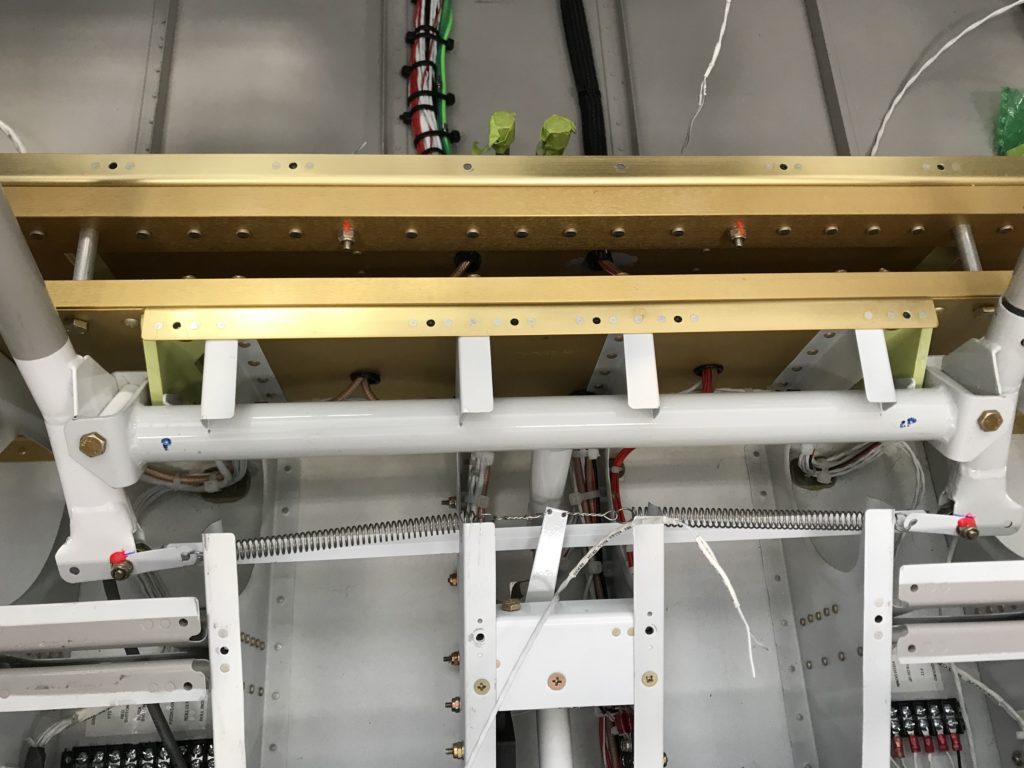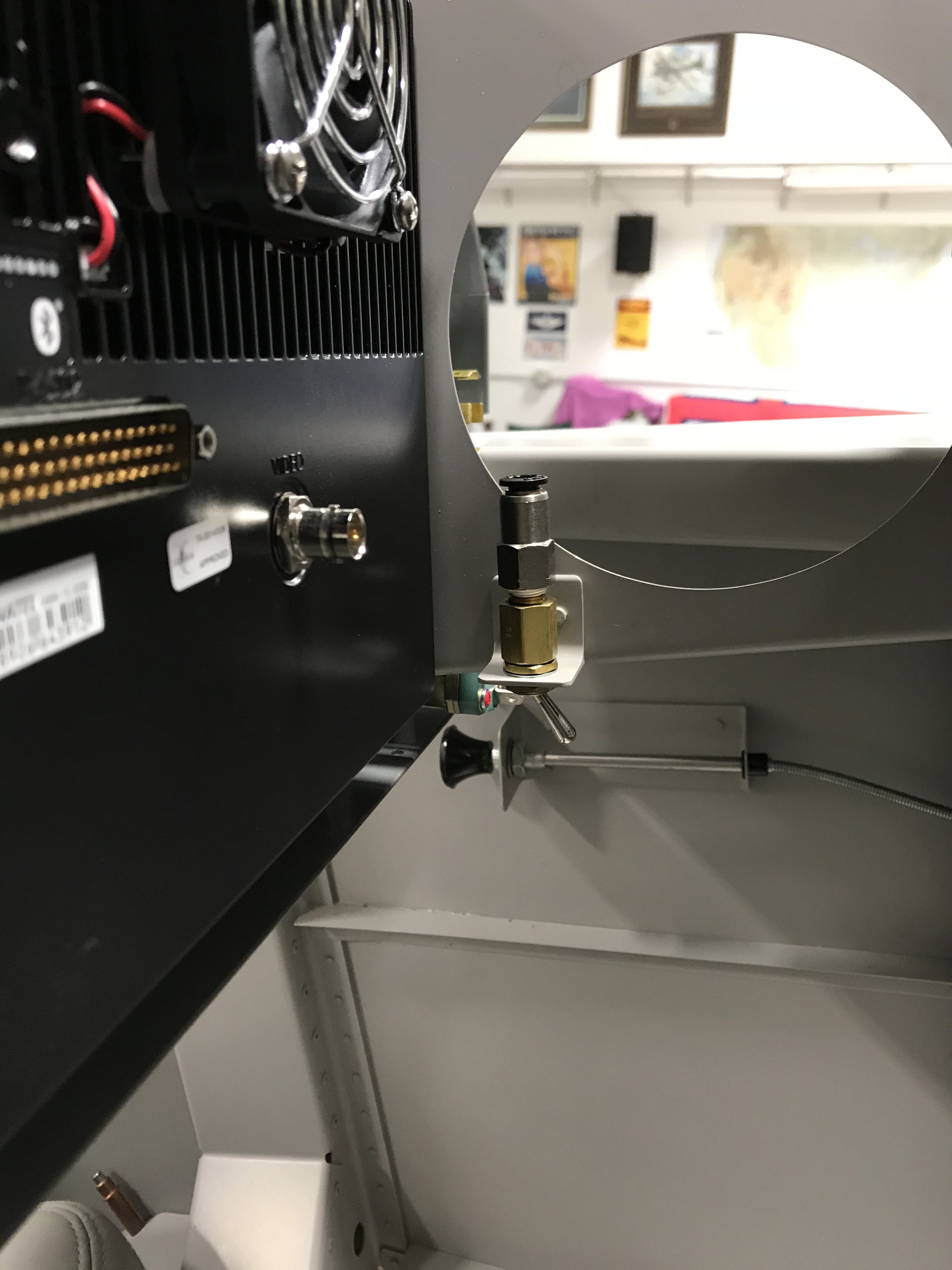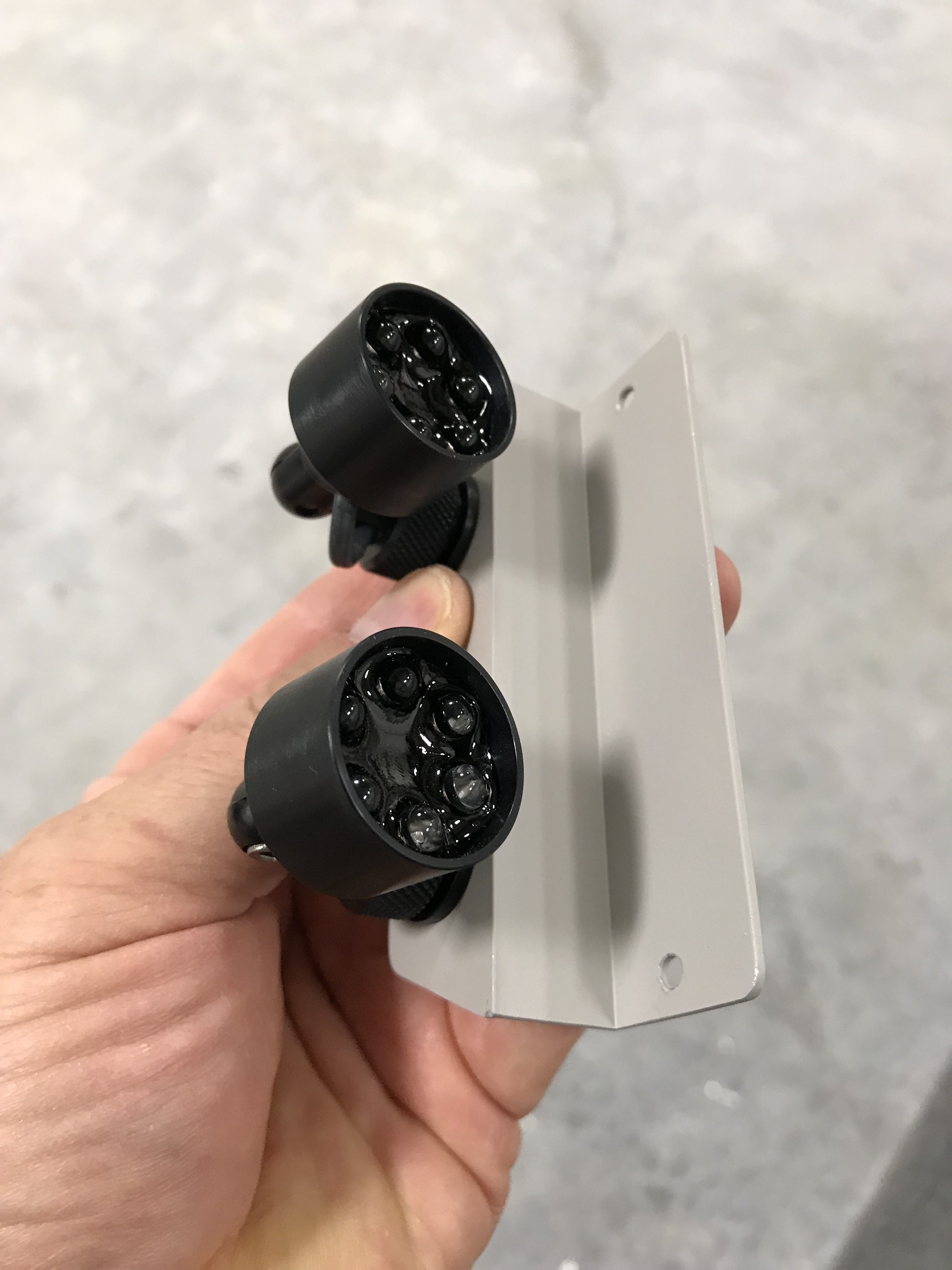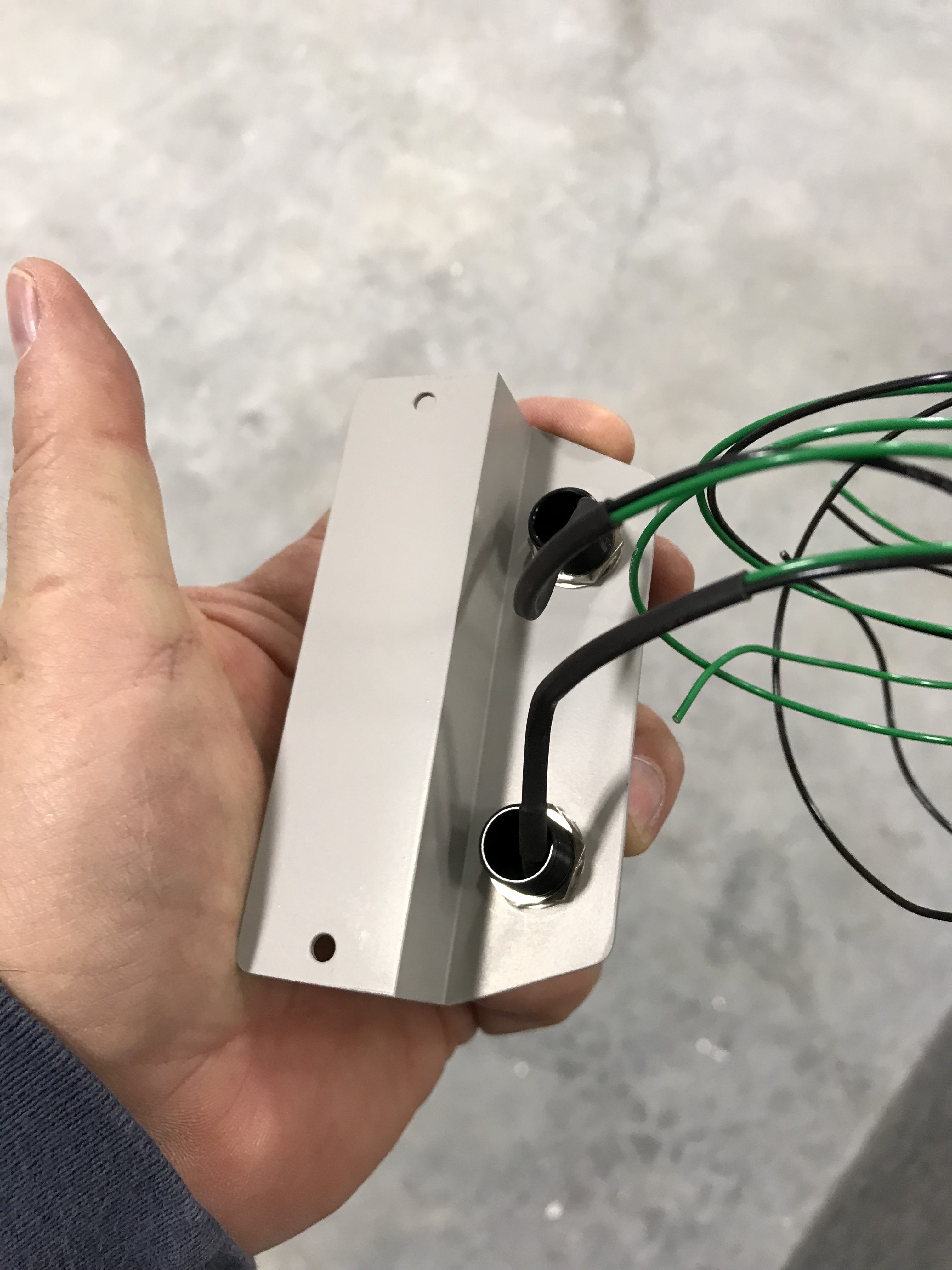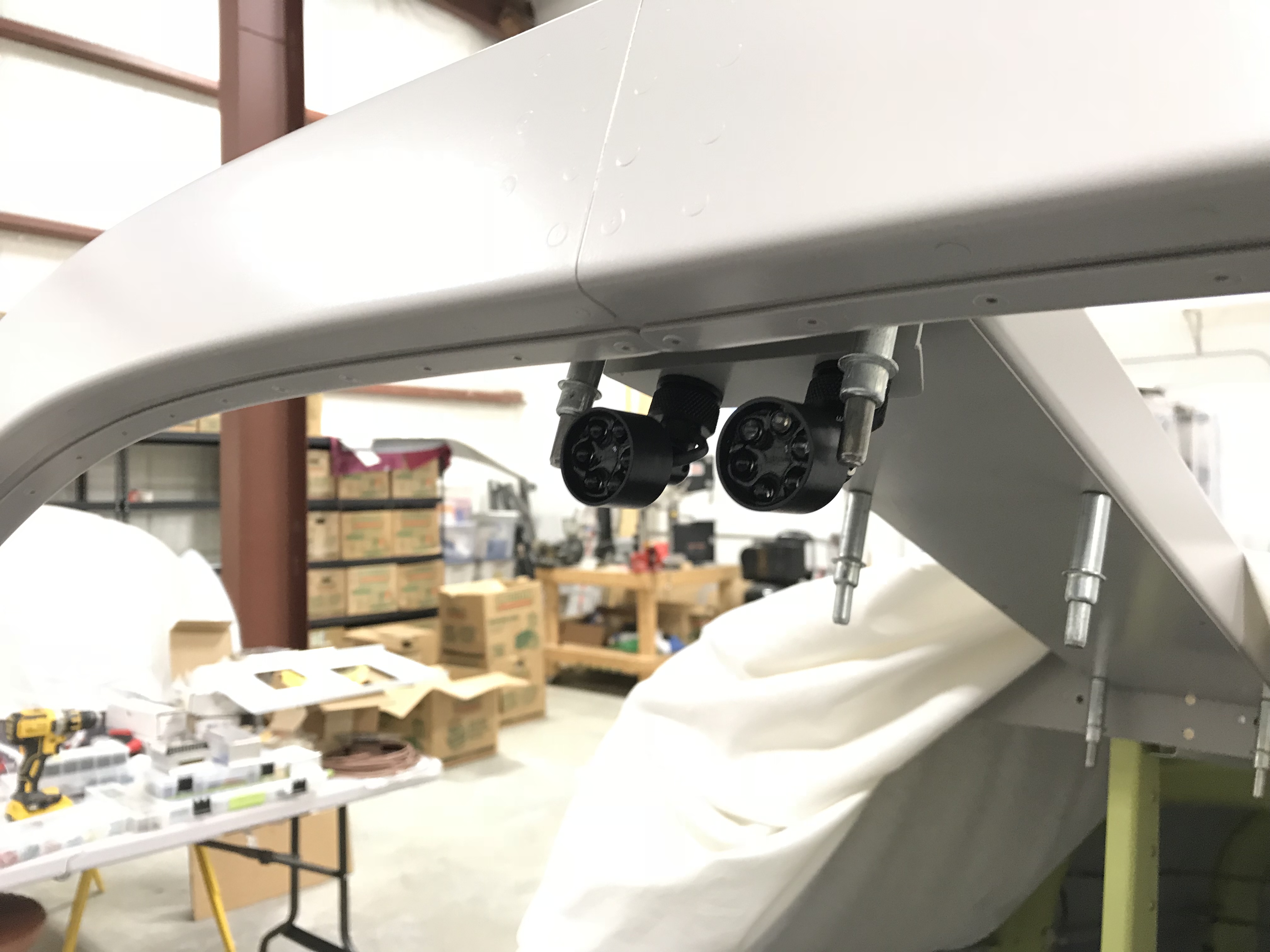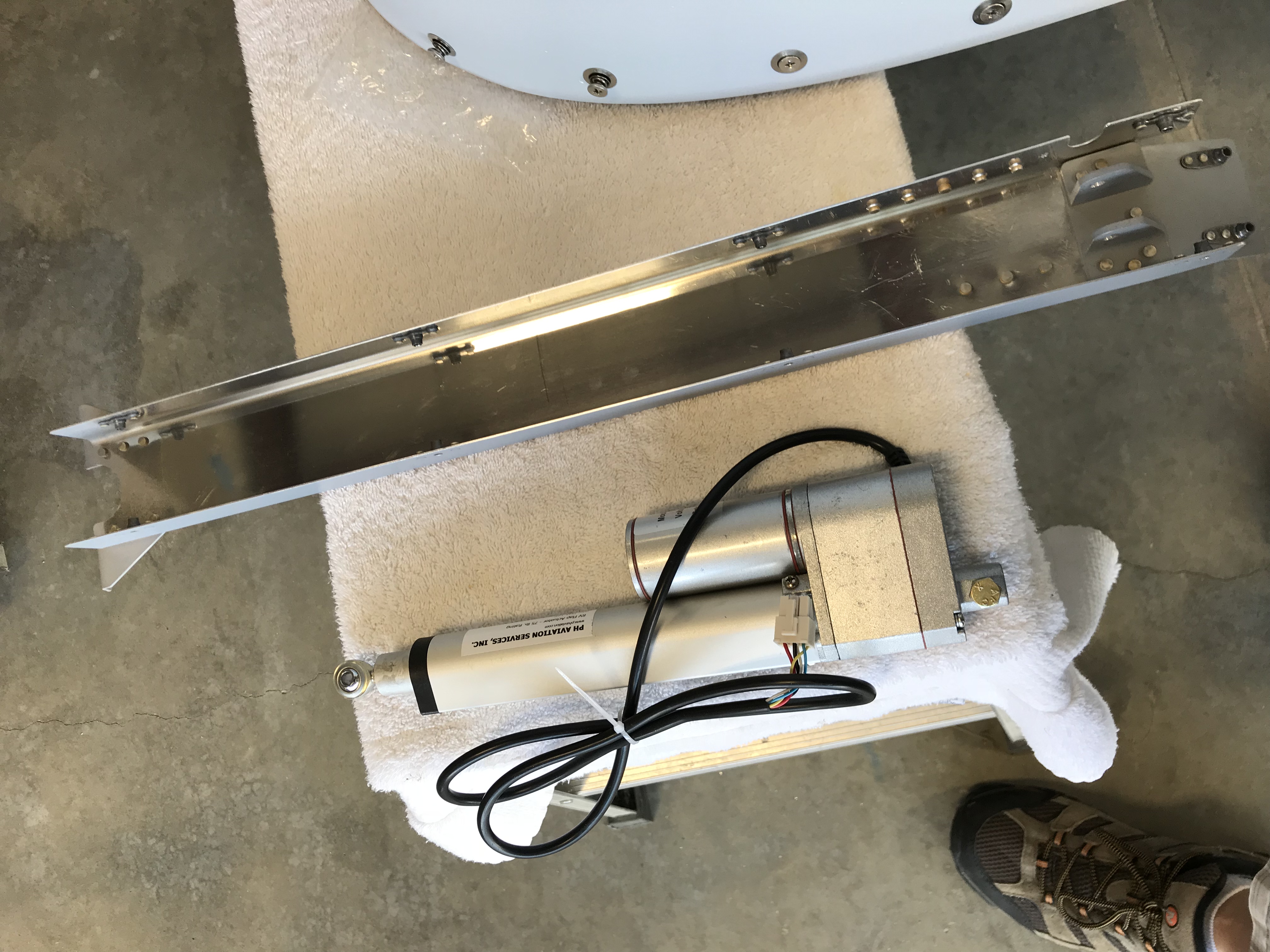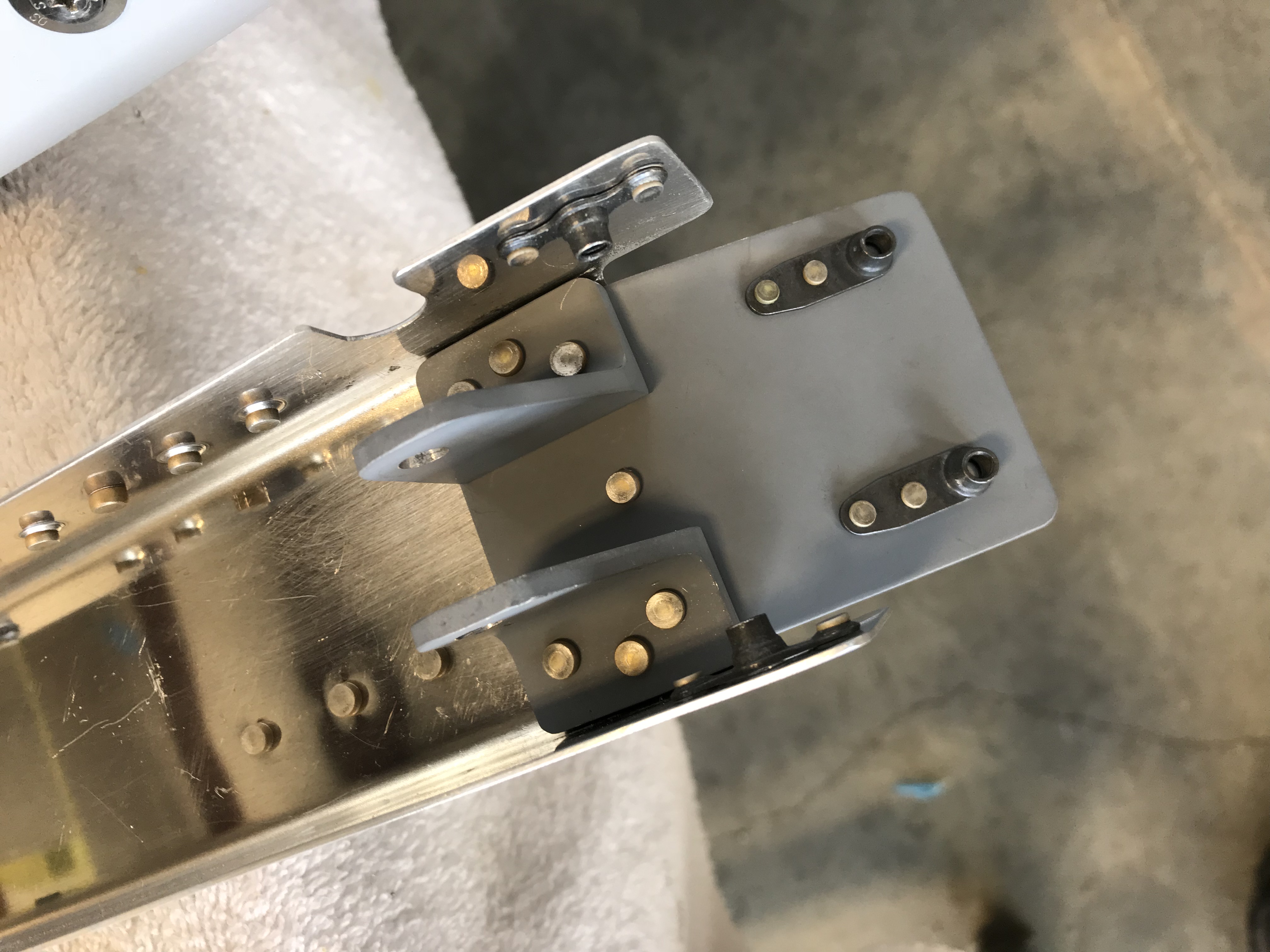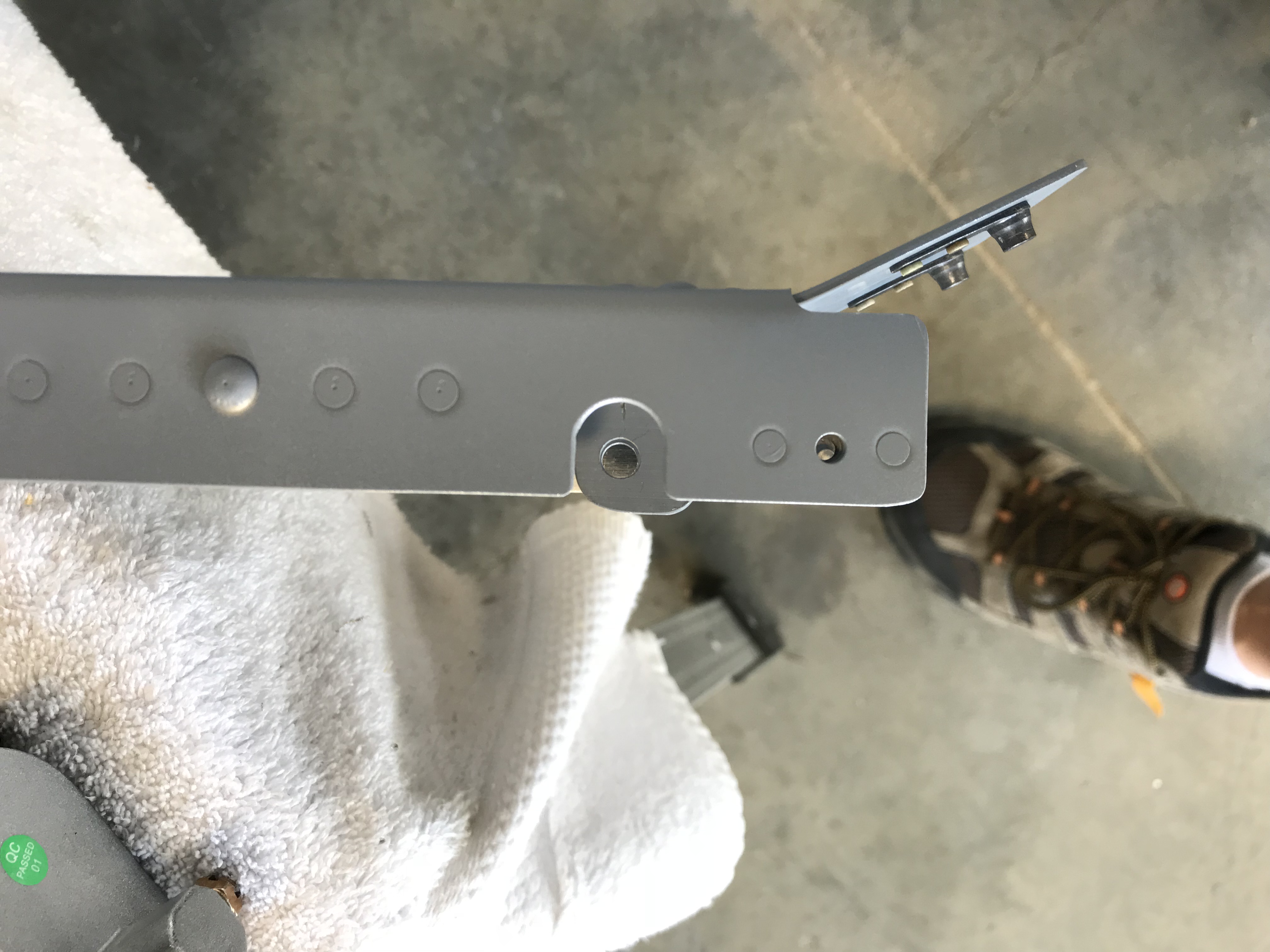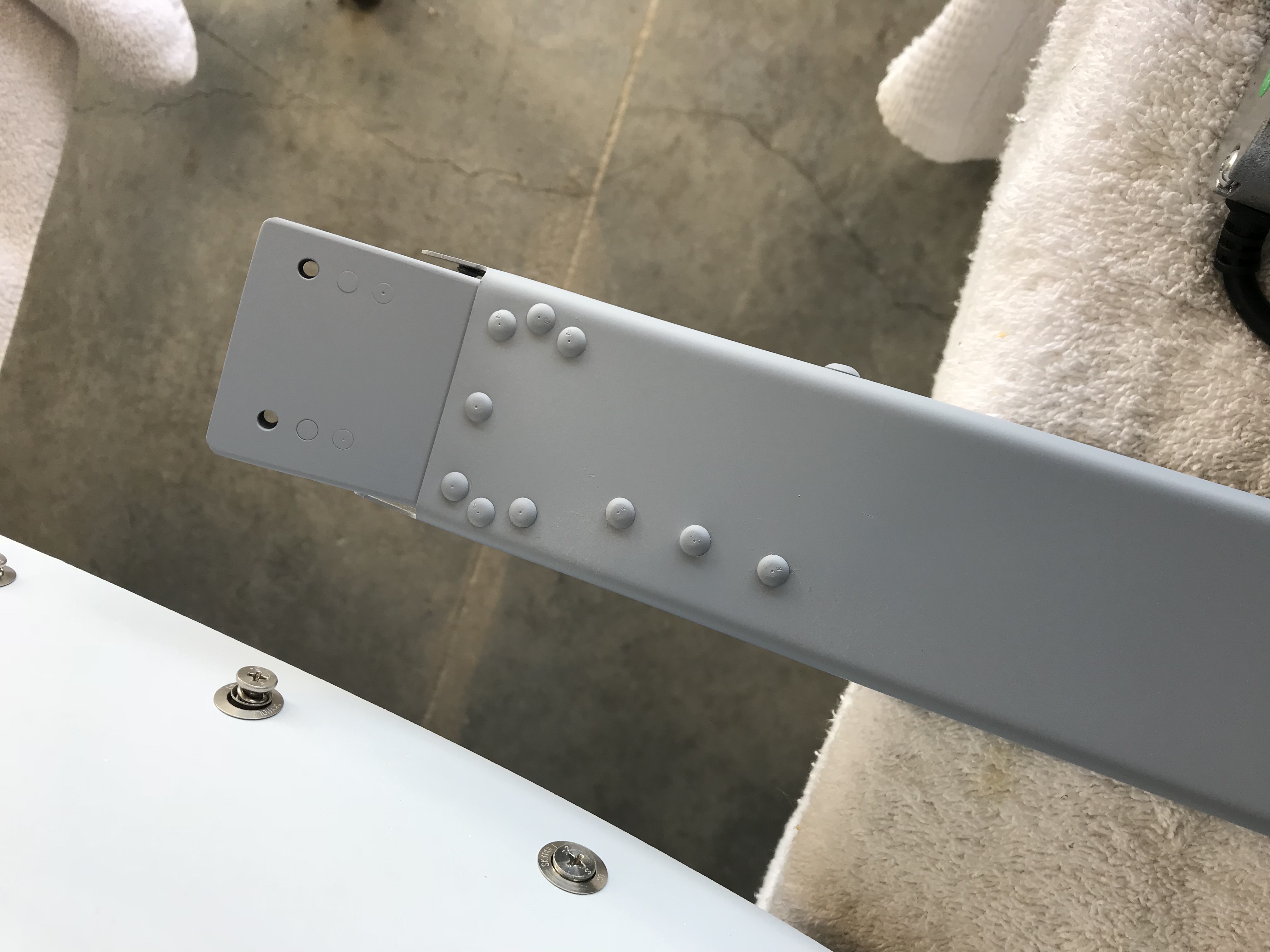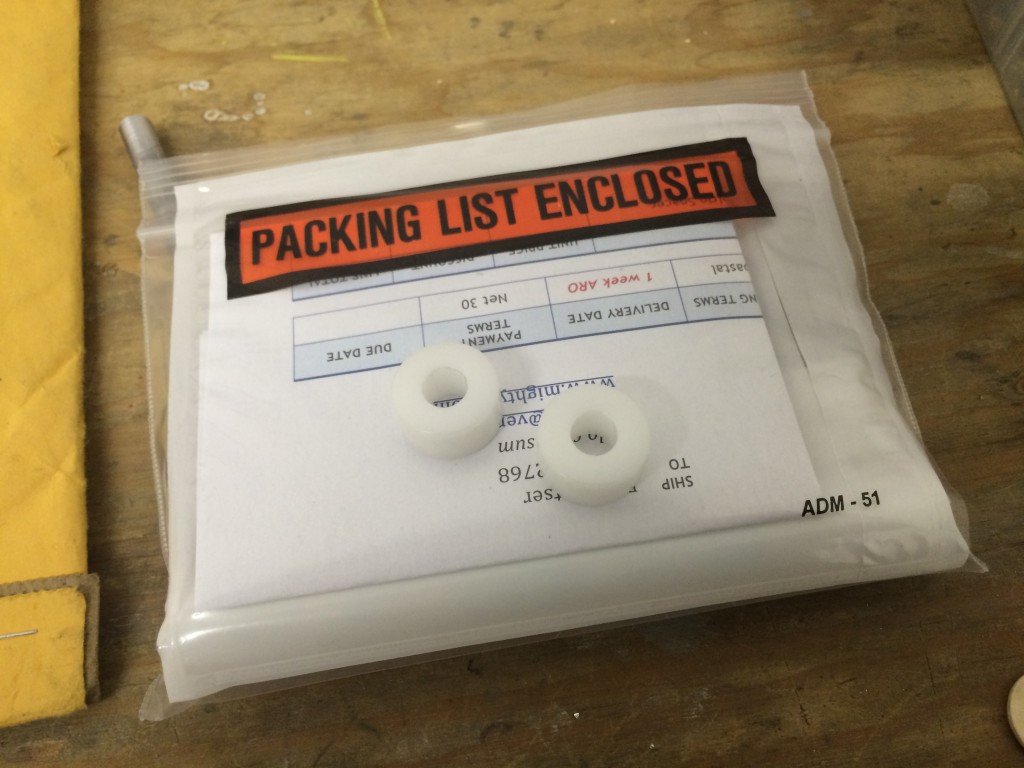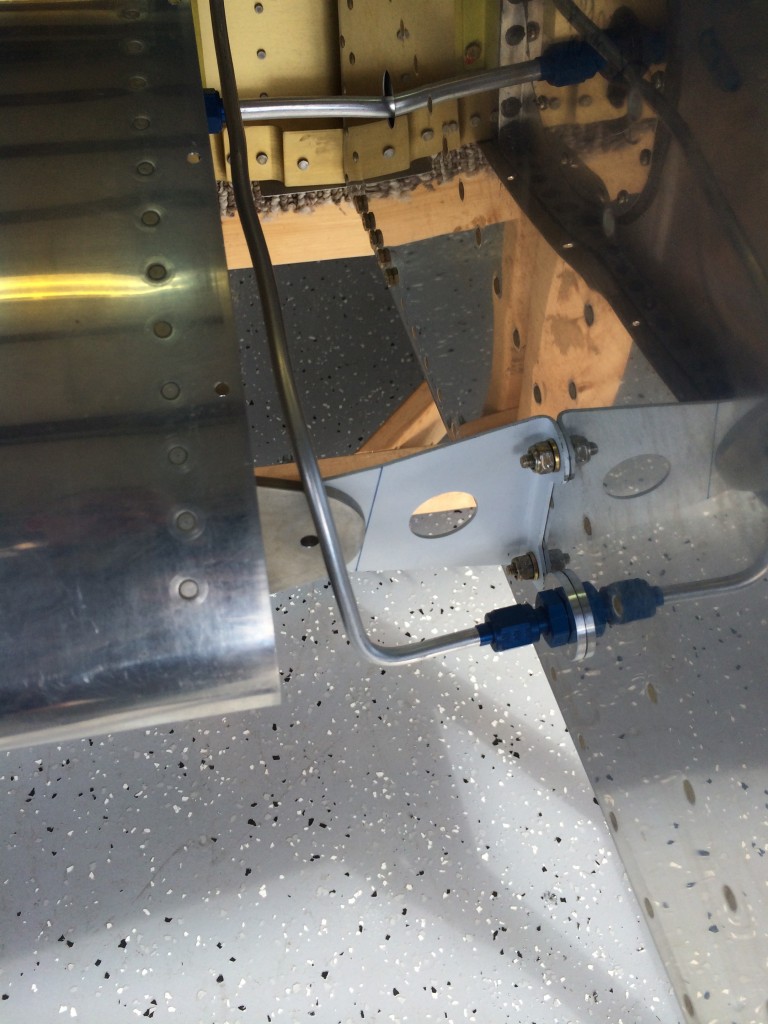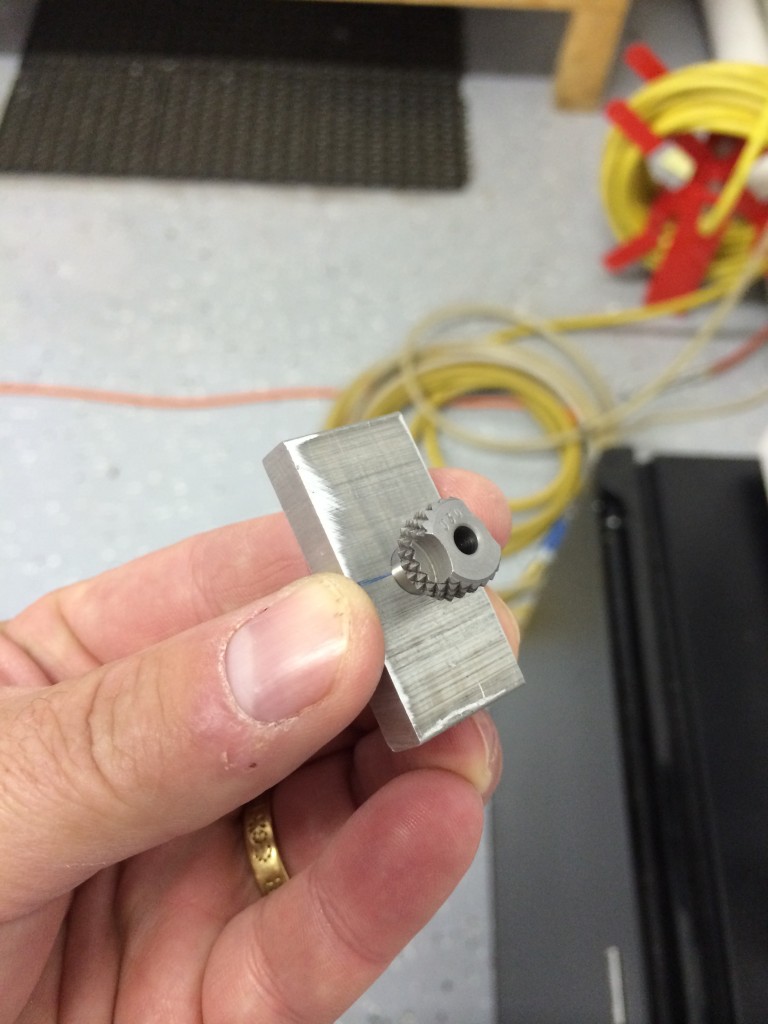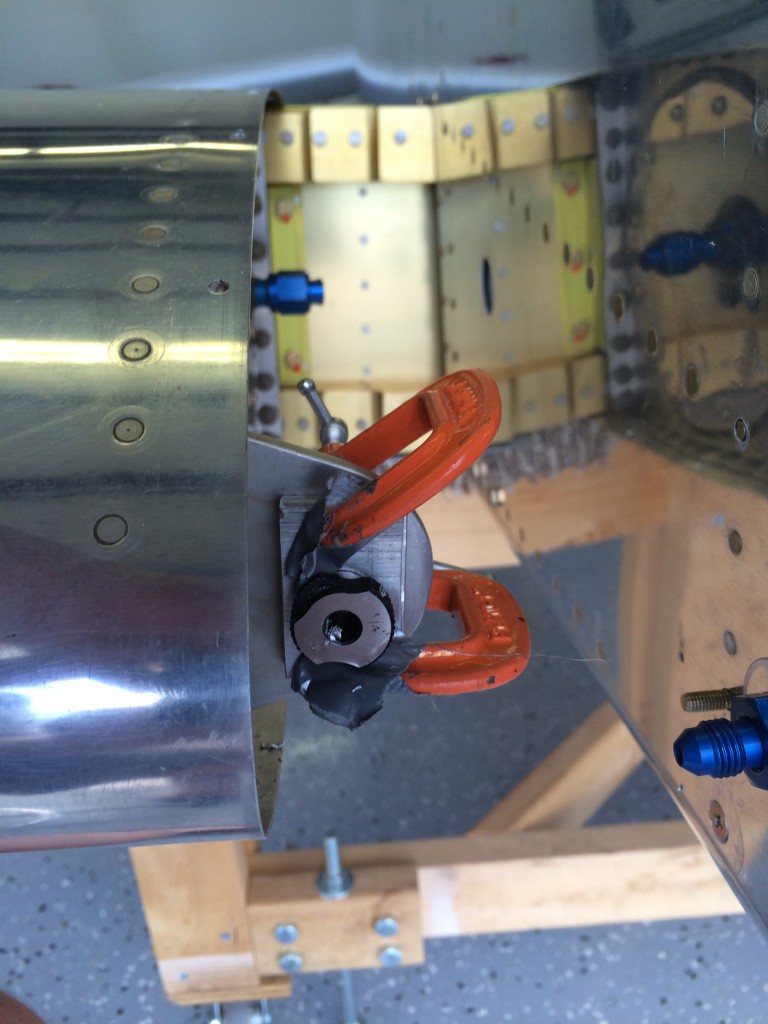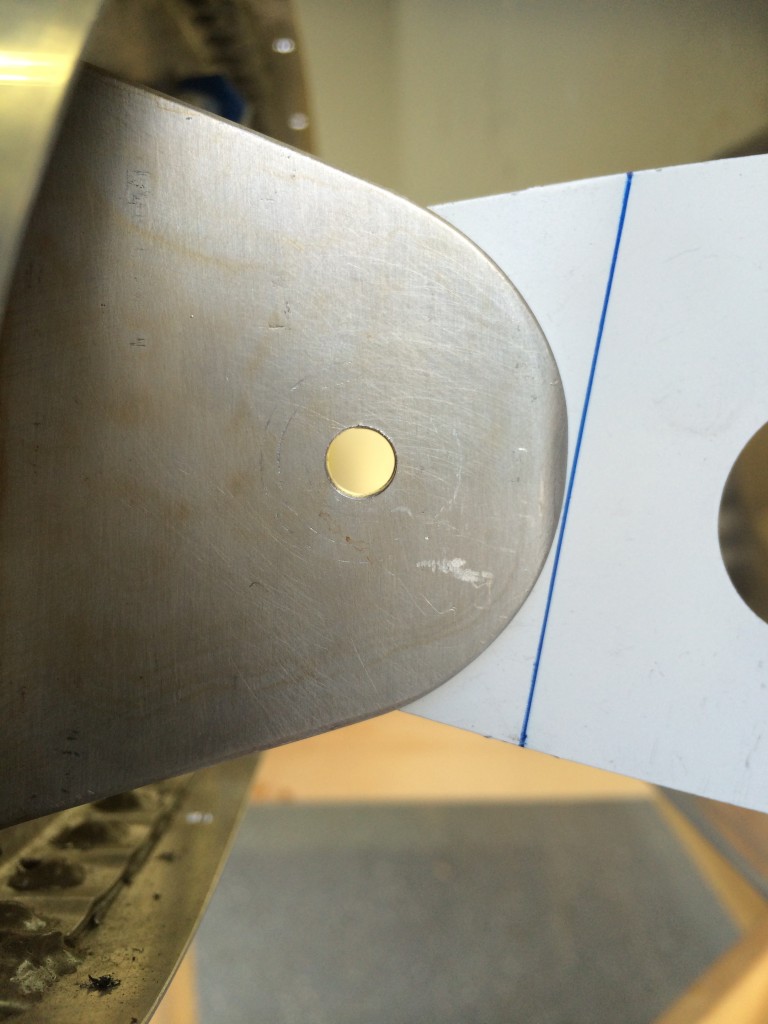Now that I’m done with transition training, I’m all fired up to finish the Mighty RV. So..let’s get those wings on!
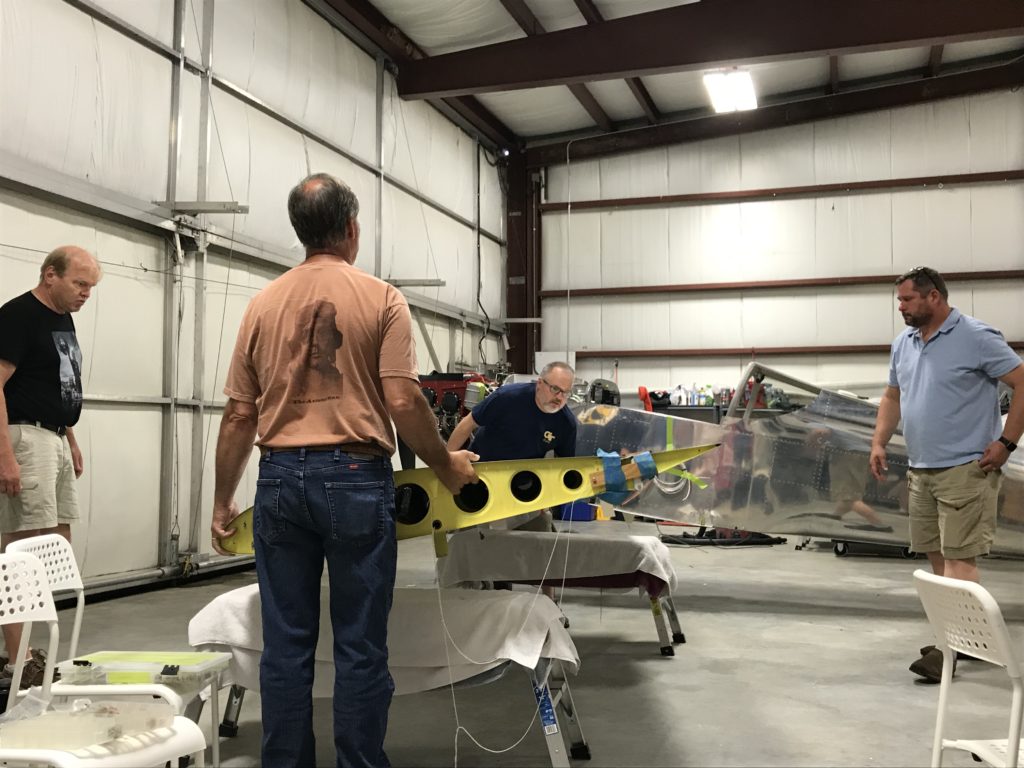 The promise of beer and burgers made it easy to co-opt some of my flying and/or RV-buidling friends to come over to the ThermosWorks on Saturday. The wings aren’t particularly heavy, but a few extra pairs of hands come in handy when trying to maneuver the wing spar into it’s slot in the fuselage.
The promise of beer and burgers made it easy to co-opt some of my flying and/or RV-buidling friends to come over to the ThermosWorks on Saturday. The wings aren’t particularly heavy, but a few extra pairs of hands come in handy when trying to maneuver the wing spar into it’s slot in the fuselage.
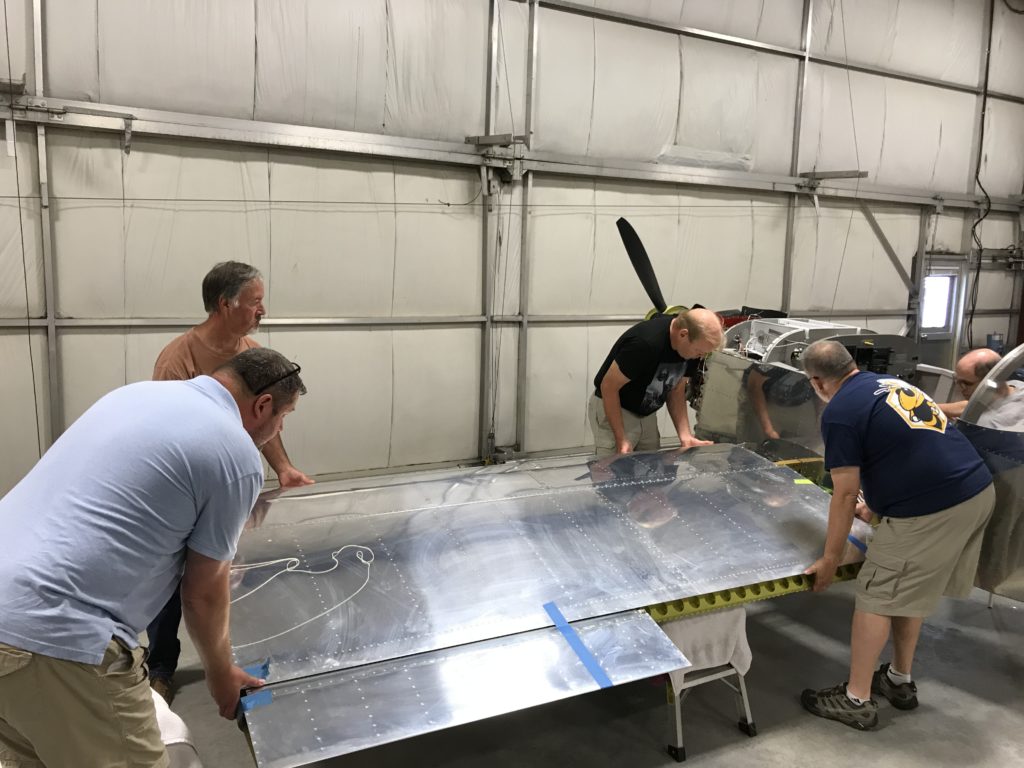
Mark Masse (RV-7 builder) and Rich Snyder (RV-8 builder) work the left wingtip up, down, left and right while Mike Henning (RV-4 builder/flyer) guide the spar into the fuselage and Burt Wadas (best friend) positions tapered stainless steel pins to align bolt holes.
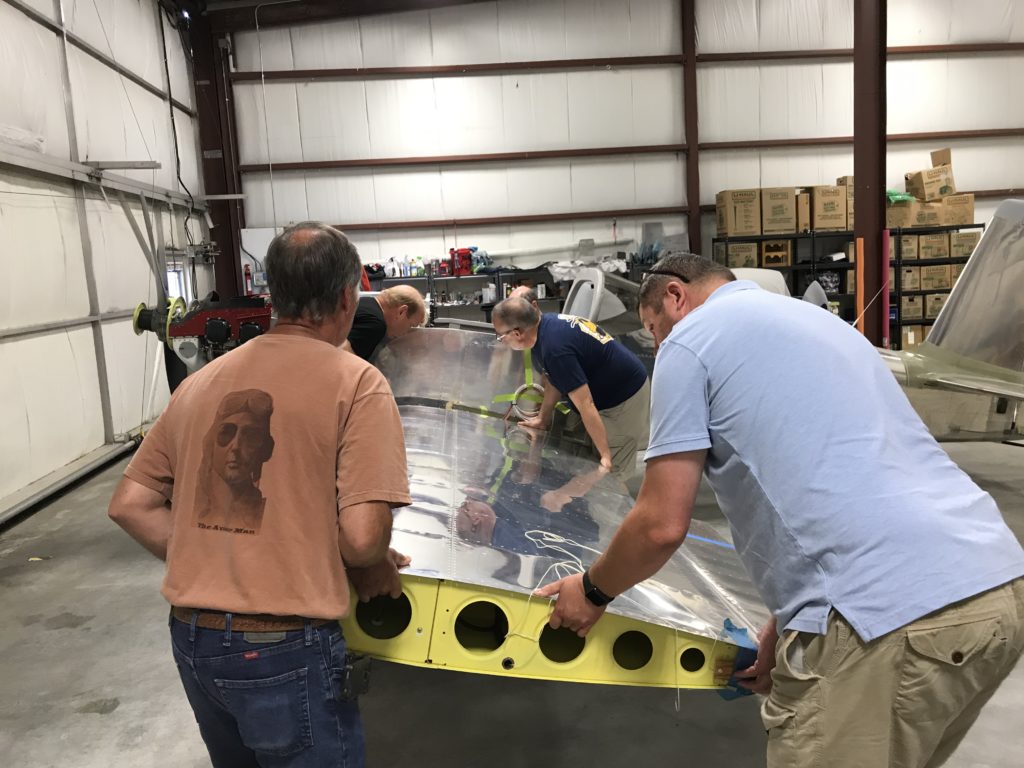
Almost done…there are two close-tolerance bolts inserted now, enough to hold the wing in place til the rest of the bolts are installed.
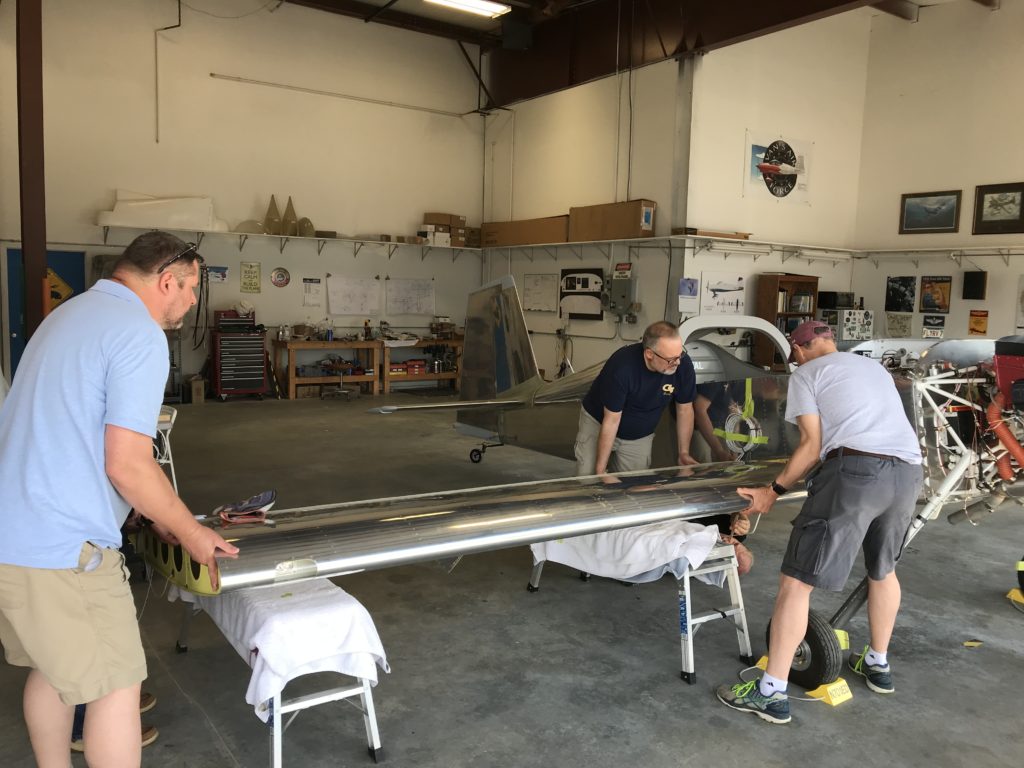
Onto the right wing…same process, but much faster the time.
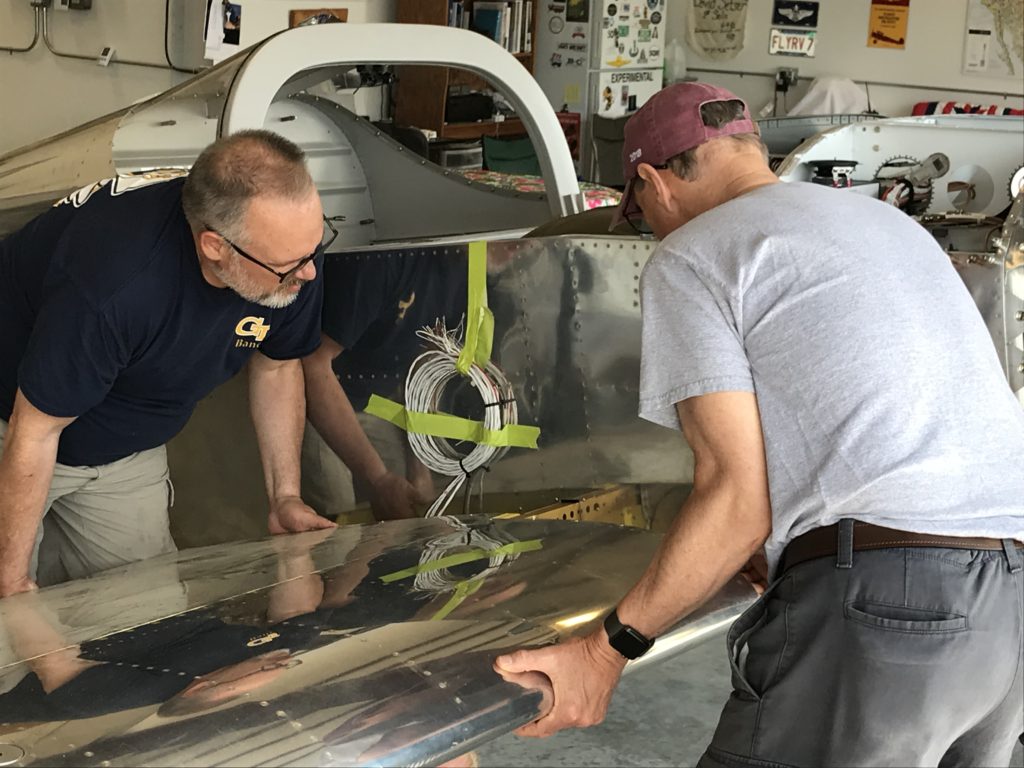
You can’t see him in this picture, but Bob DiMeo (RV-8 builder/flyer and my Technical Counselor) is waiting to insert tapered pins in while Burt and I position the wing spar.
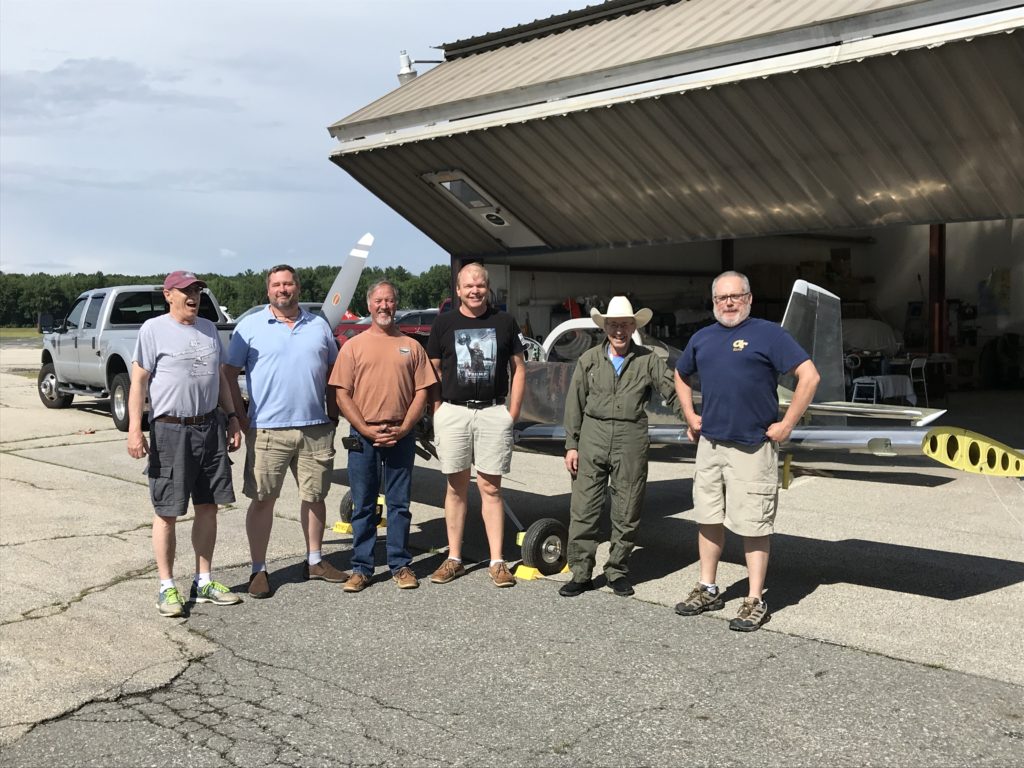
Fast forward an hour or so…the wings are in place and all bolts inserted. Everyone who has a gut is sucking it in for this picture!
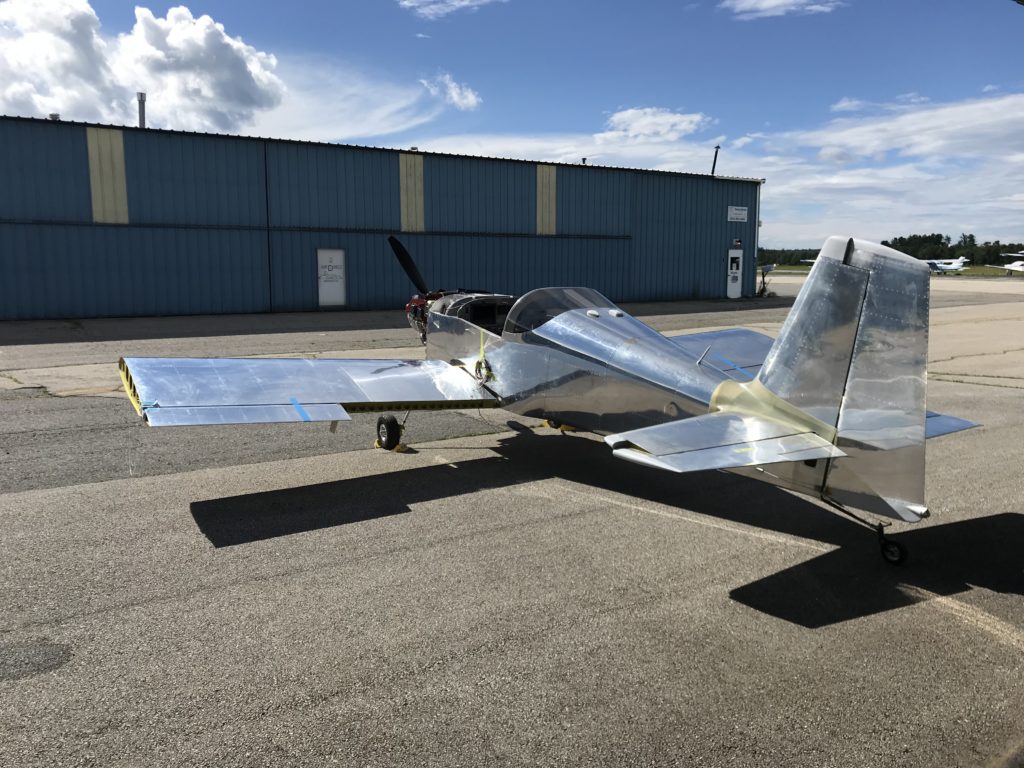
After burgers and beer, Ellen and I pushed the Mighty RV out into the sun for some pictures. Beautiful, ain’t it?
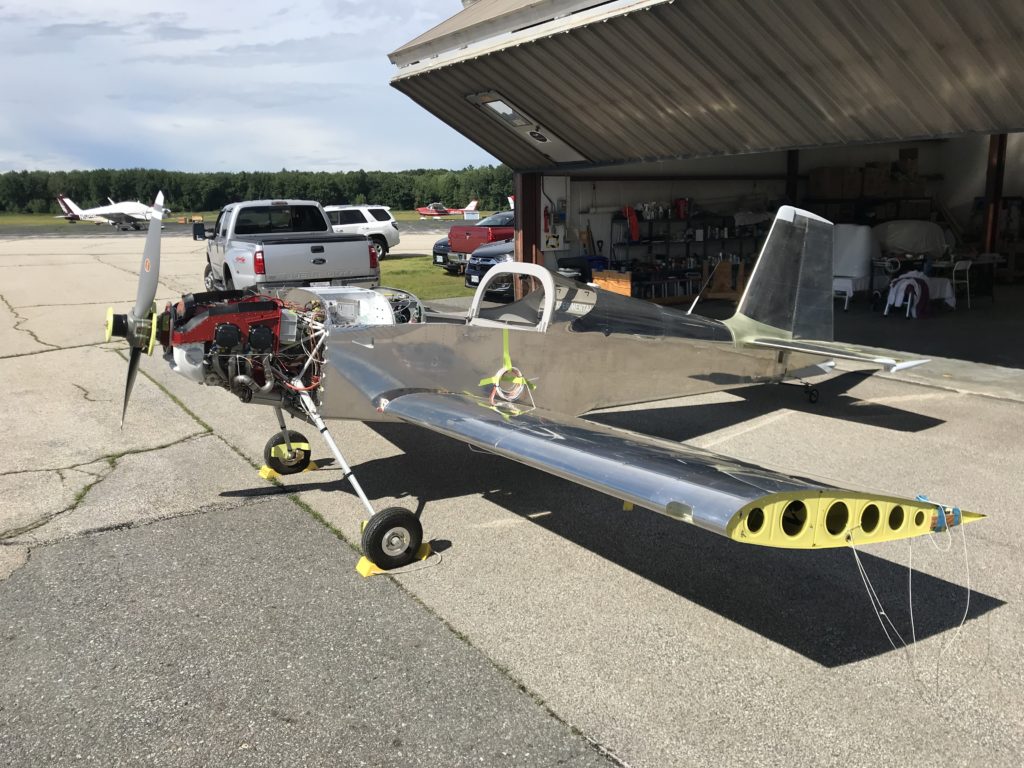
Another picture, I knew you’d ask for it.
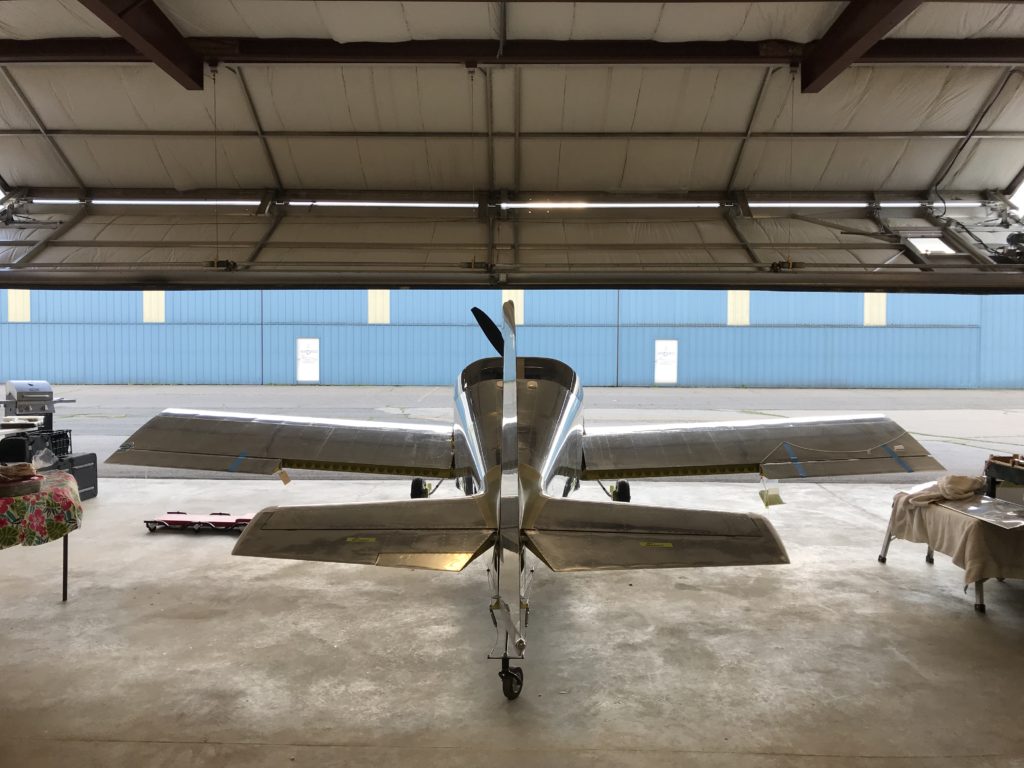 And finally, a really nice shot captured by Ellen. This is a big day in the life of the project – we’re a huge step closer to flying!
And finally, a really nice shot captured by Ellen. This is a big day in the life of the project – we’re a huge step closer to flying!
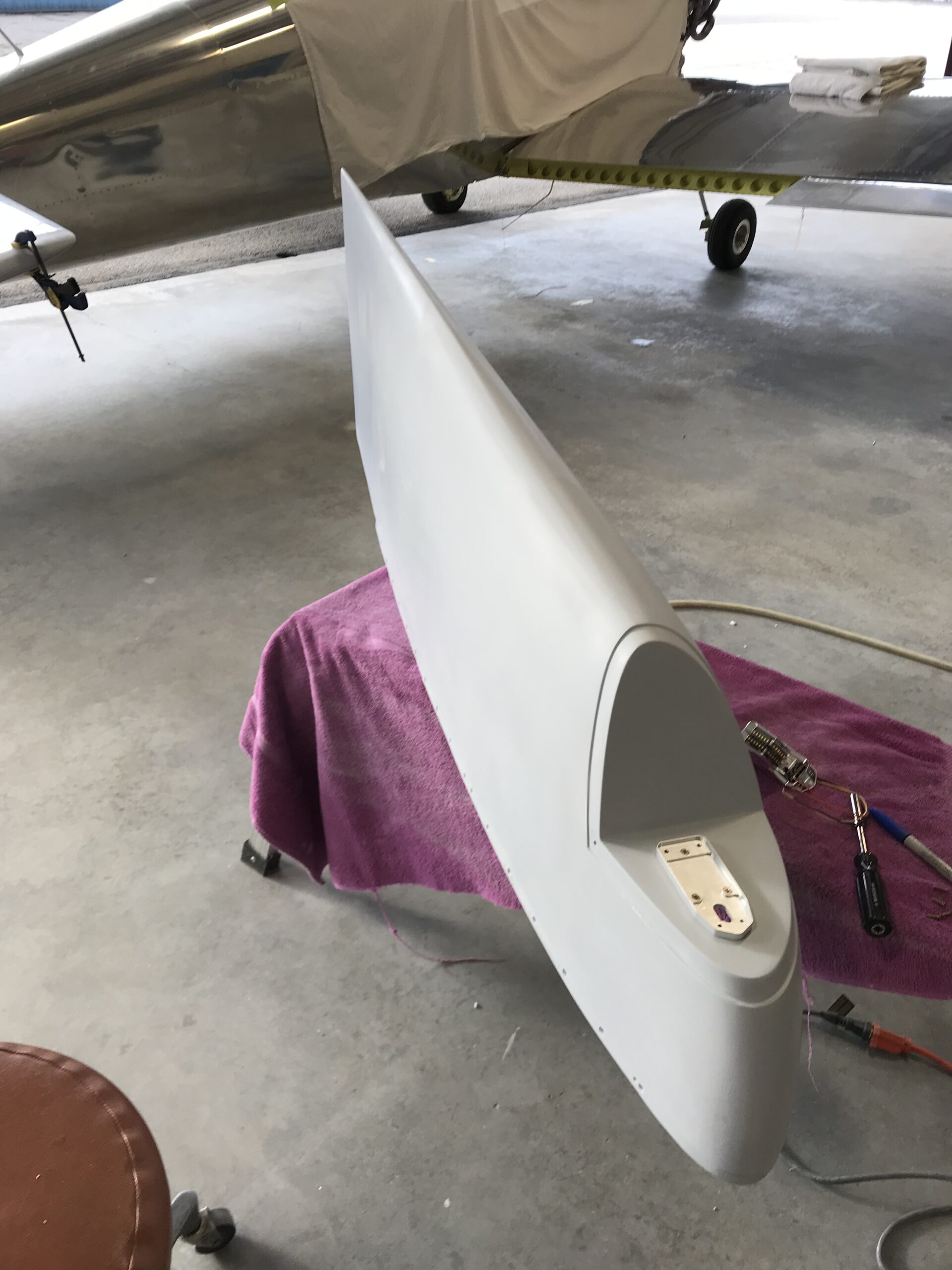 All lights in action…the Mighty RV is ready for the night show at Airventure.
All lights in action…the Mighty RV is ready for the night show at Airventure.
